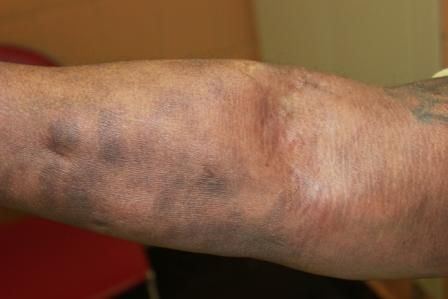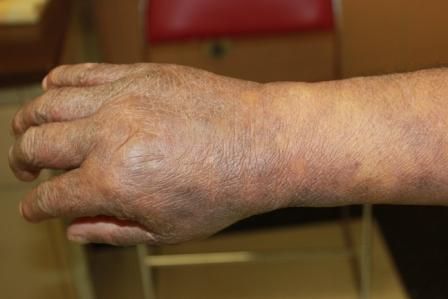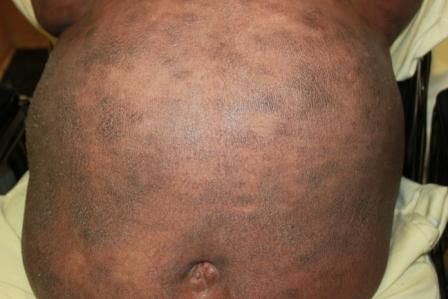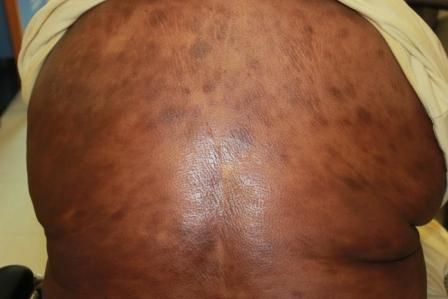- Clinical Technology
- Adult Immunization
- Hepatology
- Pediatric Immunization
- Screening
- Psychiatry
- Allergy
- Women's Health
- Cardiology
- Pediatrics
- Dermatology
- Endocrinology
- Pain Management
- Gastroenterology
- Infectious Disease
- Obesity Medicine
- Rheumatology
- Nephrology
- Neurology
- Pulmonology
Erythroderma in a 60-Year-Old Man: What Cause?
The patient's medical history was notable for hypertension, diabetes mellitus, and seizure disorder. Here, find images and lab results; then select a diagnosis.
Figure 1. (Click on images to enlarge.)

Figure 2.

Figure 3.

Figure 4.

Figure 5. H&E stain 100X.

A 60-year-old man was seen in dermatology for large confluent, hyperpigmented, erythematous, pruritic patches and plaques involving >90% of his body surface area (BSA) (Figures 1-4). There was no lymphadenopathy or hepatosplenomegaly. His medical history was notable for hypertension, diabetes mellitus, and seizure disorder. His medications included losartan, aspirin, rosuvastatin, and phenytoin.
Skin biopsy showed lymphocytic infiltrate involving the epidermis and dermis without spongiotic microvesiculation. Characteristic “haloed cells” were seen (Figure 5). Peripheral blood flow cytometry was negative for clonal disease (ie, T-cell gene rearrangement). Bone marrow biopsy was unremarkable. Pan CT did not reveal any abnormalities.
Which of the following do you believe is the cause of his erythroderma? What led you to this impression?
A. Plaque psoriasis
B. Mycosis fungoides/Sezary syndrome
C. Atopic dermatitis
D. Drug hypersensitivity reaction
E. Something else entirely
Please leave your answers below, then CLICK HERE for answer/discussion.
